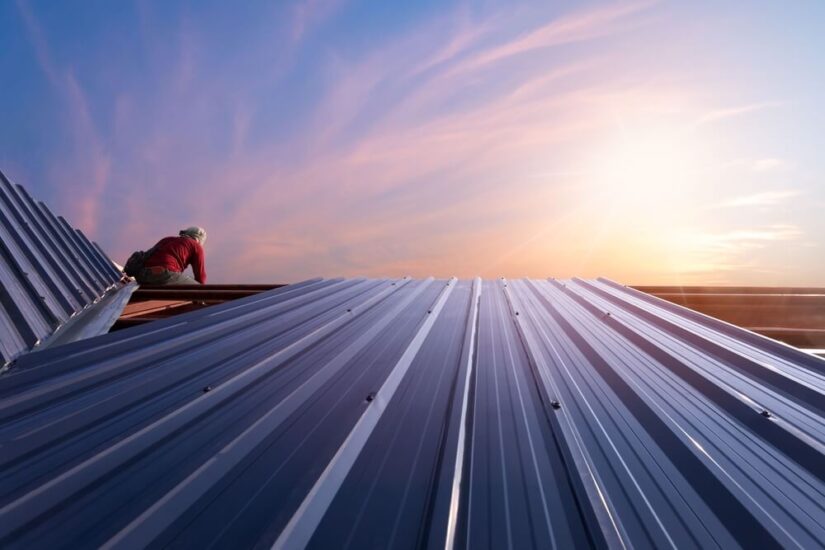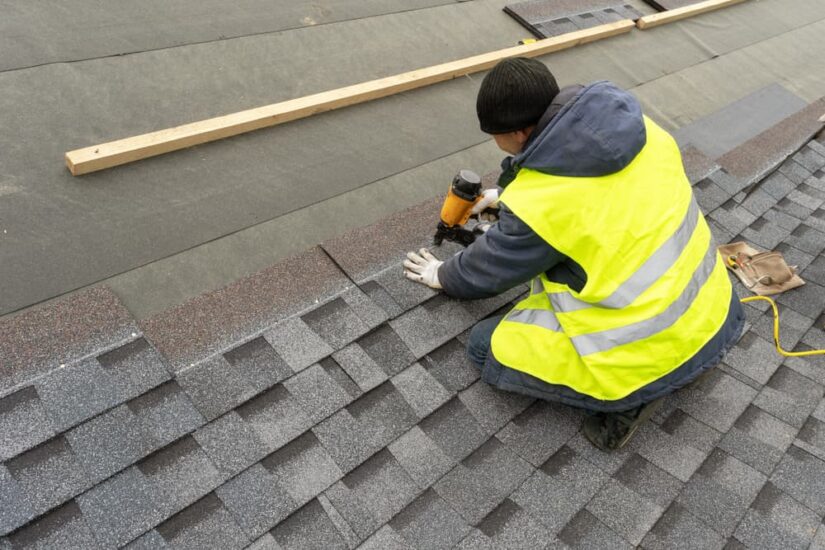Why Do Roof Valleys Leak, and What Are the Proper Repair Steps
Key Takeaways
- Roof valleys leak from debris, damaged flashing, or poor installation, letting water in and causing interior and structural damage.
- Repairs include cleaning, replacing damaged shingles and flashing, and adding waterproof underlayment for proper drainage.
- Durable, corrosion-resistant materials ensure long-lasting protection and reduce future leak risks.
- Early detection and timely repair prevent wood rot, mold, and structural issues inside the home.
- Regular inspections, debris removal, and gutter maintenance keep valleys leak-free and protect the roof over time.
Roof valleys are common leak points because they handle large volumes of water runoff where two roof planes meet, making them especially vulnerable to wear, damage, or improper installation. Leaks occur when debris buildup, damaged flashing, or failing sealant allows water to penetrate these weak spots. Understanding why these areas fail is key to effective repairs.
To properly fix a leaking roof valley, you need to inspect the valley for damaged shingles, rusted or improperly sealed flashing, and clogged debris. Repair involves cleaning the area, replacing or sealing damaged materials, and ensuring water flows freely off the roof without obstruction. With the right approach, you can prevent further damage and maintain your roof’s integrity.

Understanding Roof Valley Leaks
Roof valleys are critical channels that direct water off your roof. When they fail, water can penetrate your home, leading to serious issues that often start small but grow worse if ignored.
Definition and Common Causes of Leaks
A roof valley is the internal angle where two roof slopes meet. It collects and channels rainwater efficiently, but this makes it prone to leaks if damaged or improperly installed. Common causes of leaks include:
- Clogged valleys from debris like leaves or branches that block water flow.
- Damaged or worn flashing, which protects the valley seams.
- Improper installation of shingles or underlayment causing gaps.
- Aging materials leading to cracks or deterioration.
- Ice dams in cold climates force water under shingles.
Leaks often start where flashing fails or shingles separate, so regular inspection is essential. Understanding these causes helps you address the problem early, reducing costly repairs.
Potential Damage Resulting from Leaks
When a valley leaks, water can seep under the roof covering and into the structure. This moisture can damage rafters, sheathing, and insulation. Potential damage includes:
- Wood rot weakening structural supports.
- Mold growth inside attic spaces that harms air quality.
- Interior leaks causing stains and damaging ceilings or walls.
- Decreased insulation effectiveness, raising heating and cooling costs.
If left untreated, these issues can escalate, leading to extensive repairs. Detecting leaks early and understanding their risks helps protect your home’s integrity and value.
Importance of Timely Repairs
Addressing roof valley leaks without delay protects both the integrity of your roof and your finances. Ignoring early signs can lead to escalating issues that affect your home’s structure and repair costs.
Preventing Further Damage to the Roof Structure
When you spot a leak in your roof valley, missing shingle repair in Indianapolis helps prevent water from seeping deeper into the roofing layers. Leaks allow moisture to reach the decking and support beams, which can weaken structural components over time.
Failure to act can cause rot, mold, and warping in wood framing, compromising the roof’s stability. These problems often extend beyond the roof itself, potentially damaging ceilings or interior walls. Early intervention minimizes the risk of this extensive damage.
Properly repairing the valley usually involves removing damaged materials around the leak and reinstalling waterproof barriers correctly. This restores the roof’s ability to manage water flow and reduces vulnerability to further leaks.
Cost Implications of Delayed Repairs
Delaying roof valley repairs often results in significantly higher expenses. Small leaks can escalate into major damage, requiring more extensive labor and materials to fix.
You may face costs related to replacing structural wood, removing mold, or repairing interior damage caused by prolonged water intrusion. Emergency repairs also tend to be pricier due to the urgency and complexity.
In contrast, timely repairs typically involve straightforward patching or partial material replacement, keeping costs manageable. Investing early not only preserves your roof’s lifespan but also protects your budget from unpredictable repair bills.
Jackson Contracting’s Roof Valley Leak Repair Process
When you face a roof valley leak, the repair process requires a detailed evaluation and precise use of materials. Understanding the condition of your roof valley and selecting appropriate repair techniques ensures a durable fix that prevents future leaks.
Inspection and Assessment
Jackson Contracting, a licensed and insured roofing company in Indianapolis, begins with a thorough inspection of your roof valley. They look for signs of wear such as cracked or missing shingles, damaged flashing, and deteriorated underlayment. Water stains or mold inside your attic may also indicate hidden leaks.
The team evaluates the roof’s pitch and drainage patterns to identify weaknesses in how water flows through the valley. This allows them to determine whether the leak is caused by poor installation, age-related damage, or debris buildup.
You receive a clear report explaining the extent of damage and recommended actions. This step ensures that repairs address not just visible damage but underlying issues that could cause repeated leaks.

Repair Techniques and Materials Used
Repairs involve removing damaged shingles and old flashing around the valley area. Jackson Contracting installs high-quality metal valley flashing designed to withstand heavy water flow and prevent pooling. This flashing is crucial because it directs water efficiently into gutters.
The team replaces deteriorated underlayment with waterproof membrane materials that add an extra layer of protection beneath the shingles. Roof sealants are applied only in specific areas to maintain flexibility and prevent cracking over time.
The repaired valley uses durable, corrosion-resistant materials chosen for longevity in your local climate. This method ensures your roof valley remains tight and waterproof, reducing the risk of costly future water damage.
Maintenance Tips
Keeping your roof valleys in good condition requires routine care and attention to detail. Early detection of problems and consistent upkeep can prevent leaks and costly damage.
Regular Inspections and Upkeep
- You should inspect your roof valleys at least twice a year, ideally in spring and fall. Look for debris like leaves and twigs that can trap water and accelerate wear.
- Check the flashing along the valleys for any rust, cracks, or gaps. Damaged flashing allows water to seep under shingles, causing leaks.
- Clear gutters and downspouts regularly to ensure proper drainage. Water pooling near valleys increases leak risk.
- If you notice minor cracks or gaps in roofing cement or sealant, apply roofing sealant promptly to maintain a watertight barrier.
Signs of Potential Issues
Be alert to water stains or discoloration on your attic ceiling or walls, which often indicate roof valley leaks. Damaged, curling, or missing shingles along valleys need immediate attention. These vulnerabilities let water enter the roofing structure.
You may also hear dripping or notice mold growth after heavy rain—both are signs of moisture intrusion. If you spot sagging or soft spots on your roof near valleys, it signals structural damage requiring professional repair.
For ongoing maintenance, consider additional roofing services by Jackson Contracting to inspect and address issues before they worsen. If you end up needing a local roof replacement contractor in Indianapolis, then Jackson Contracting is the company to call.
